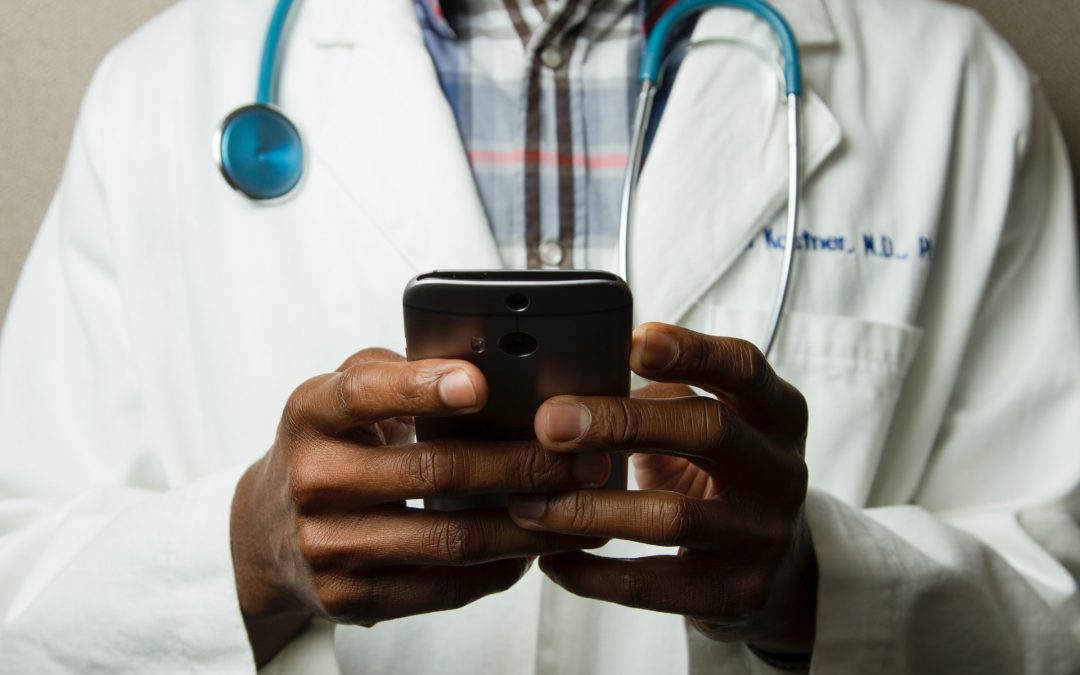Telemedicine is a medical treatment field that arose about fifty years ago when certain hospitals began reaching out to patients in distant locations using the technology of that time. As technology has changed at an incredible rate over the last several decades, telemedicine has moved into the forefront of the medical field; there has been a major focus on telemedicine as remote healthcare options have mitigated the impact of the current COVID-19 pandemic on healthcare.
Telemedicine is the use of telecommunication systems and software by physicians and medical professionals to communicate with patients via secure video and audio connections in order to provide remote clinical care (i.e. to diagnose and treat patients with limited-to-no in-person visits). Telemedicine technology is frequently used for the management of chronic conditions, medication management, specialist consultation, and follow-up visits, among other clinical services.
The purpose of telehealth services is to enable healthcare professionals to provide care without being physically face-to-face with their patients. Telemedicine has become more popular over time and has become an even more vital service during the COVID-19 pandemic. Doctors and other healthcare providers can diagnose patient symptoms, direct and manage care referrals, prescribe treatment options, and provide general medical advice and care via telemedicine. Telemedicine is particularly valuable as a tool for delivering quality medical care not only to patients in remote areas but also to those who are isolated due to quarantine. Medical professionals also can take part in continuing education opportunities and collaborate with other healthcare professionals via some telemedicine services. Telemedicine services are extremely beneficial to both patients and healthcare providers.
There are many ways that telemedicine continues to change the way patients receive healthcare. One major benefit is that it allows healthcare providers and their patients to communicate via remote patient monitoring (RPM). As telehealth technology improves, it increases the effectiveness of communication methods between providers and patients; more regular check-ins and follow-up care results because they do not have to rely on face-to-face appointments. For patients with significant health issues and/or those practicing social distancing during the current pandemic, telemedicine has proven to be of vital importance. Further, RPM reduces unnecessary patient visits to their healthcare providers, lowering costs across the board, and giving medical providers more time to see the patients who require direct and/or immediate care.
The benefits of telemedicine apply to the communication and care between healthcare professionals and their patients; they also apply to the interactions between the professionals themselves. As telehealth technology expands and advances, the networks that healthcare workers use have increased and improved opportunities for education and general communication to work together to efficiently find effective holistic solutions to healthcare problems. With telemedicine as a means for collaboration, healthcare providers from multiple medical specialties can address medical issues concomitantly to create personalized treatment plans that are valuable for many patients—such comprehensive care usually requires multiple referrals and would take up to months to secure in-person appointments.
Another benefit of telemedicine specifically for healthcare providers is the improvement of electronic health records (EHR) management within their practices. EHR management requires providers to collect, organize, maintain, update, and share medical information between multiple sources, which is faster and easier when using HIPAA-compliant telemedicine resources. Using such resources means medical providers will likely have fewer missed appointments and cancellations, and that they can provide a better overall patient experience with better health outcomes. Telemedicine resources allow providers to enjoy greater efficiency overall, too, resulting in increased revenue.
Many health providers are implementing telemedicine services to improve overall care for their patients. With advances in communication via telemedicine technology, more providers can care for more patients in a more efficient way.
Quick Claimers Medical Billing is a medical coding and billing company based in El Paso, Texas. Quick Claimers is committed to serving healthcare professionals by providing effective and impactful medical coding and billing solutions tailored to each provider’s individual needs. If you would like more information about enhancing your healthcare business and increasing your revenue, please reach out to the specialists at Quick Claimers. The team can be contacted by visiting their website, by email at info@qcmbinc.com, or by phone at 915-351-6600.

